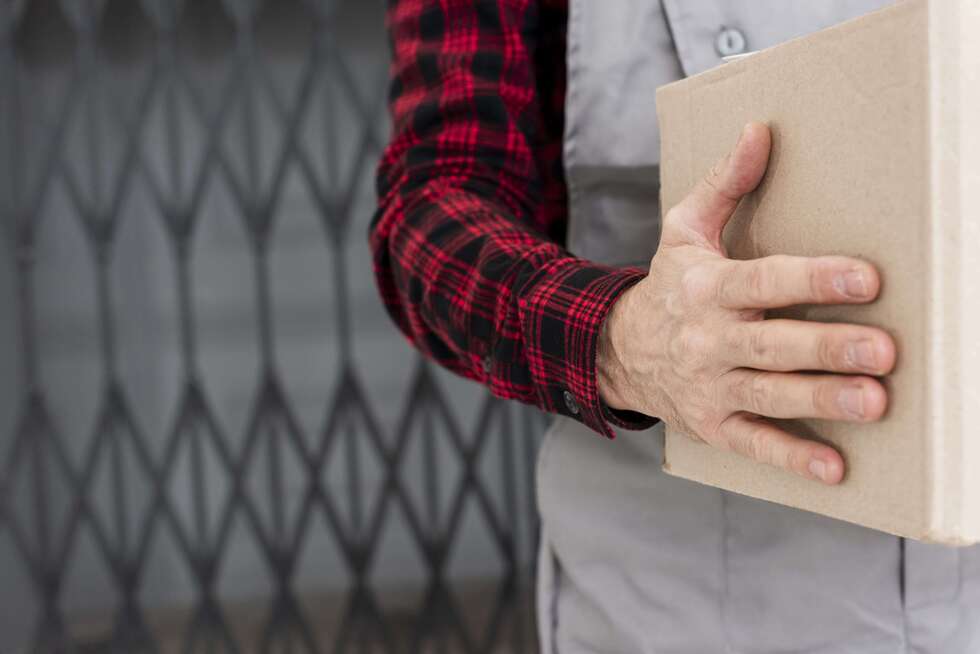For a few days now, your customers have been confined to their homes as part of the Coronavirus health crisis. However, not all activities have stopped… quite the contrary!The confined populations are discovering or rediscovering the benefits of e-commerce and home delivery. A Nielsen study has shown, for example, that home delivery during the week of 2 to 8 March recorded an increase of 72.22%. Are you and your teams part of these courageous workers who continue their activity and deliver customers to their homes? Discover all the good practices to put in place for home deliveries that are as safe as possible, and that limit the spread of the Coronavirus as much as possible.
 Contents
Contents
- The basics: applying barrier gestures
- Good practices during the order preparation phase
- Good practices during home delivery

1. The basics: applying barrier measures
you already know them, but it’s always good to remember them: barrier measures are currently the best way to protect yourself against the spread of the Coronavirus. So remember to apply the following measures on a daily basis
- Wash your hands very often: soap is just as effective as hydroalcoholic gel in fighting the Coronavirus
- Greet others without touching: no handshakes, hugs or kisses for now!
- Sneeze or cough into your elbow or into a tissue
- If you use tissues, make sure they are single-use and throw them away as soon as you have used them
- Respect the minimum safety distance of one metre between all persons
whatever your position in the company or in the warehouse, regularly remind your colleagues and service providers of these barrier gestures. As the first vector of transmission is unwashed hands, and the virus can survive for a few hours or even days on certain surfaces, these gestures are an essential part of your daily routine during the health crisis
| Reminder: The government is clear that anyone with symptoms of Covid-19 should stay at home and not go to work. The main symptoms of the disease are cough, fever, body aches, headaches, shortness of breath and sudden loss of smell and/or taste. |
2. Good practices during the order picking phase
for you and your teams, the fight against the spread of the virus starts upstream in the logistics chain, when your orders are being prepared. First of all, think about providing each operator with his own equipment, right at his order preparation table. The objective is to avoid employees sharing the same tools (scrollers, cutters, scissors, etc.) and thus having potentially infected points of contact with each other. If possible, provide your preparers with protective glovesif these do not eradicate all potential traces of the Coronavirus, they allow the picker to throw them away (and the virus with them if they were on them) when they leave the order preparation line. However, remember to regularly remind your teams not to touch their faces, even with these gloves! To ensure that safety distances are respected, you can choose toindicate on the floor, using coloured or marked stickersthis will allow each person in the team to remain at a reasonable distance from the others. If your pickers usually work very close to each other on the picking line, consider installing cardboard partitions between each of their workstations to block any potentially infectious contact between them. You are now ready to ensure optimum protection for your employees, so that your parcels are ready for home delivery! 3. Good practice in home delivery On 19 March 2020, the French government issued a guide to good practice and health precautions to be observed in home delivery of parcels. Here are the main points to ensure the safety of both the deliverers and the customers. The official guidelines recommend that priority should be given to direct delivery to the letter box, as this avoids any contact between the delivery person
3. Good practice in home delivery On 19 March 2020, the French government issued a guide to good practice and health precautions to be observed in home delivery of parcels. Here are the main points to ensure the safety of both the deliverers and the customers. The official guidelines recommend that priority should be given to direct delivery to the letter box, as this avoids any contact between the delivery person
- The delivery person should warn the customer that he is coming, by knocking or ringing the doorbell.
- He then places the parcel on the doorstep and steps back at least one metre from the door.
- He does not collect a signature from the customer, nor does he pass the parcel from hand to hand, to avoid direct contact.
| What about deliveries requiring installation at home?Some products, such as household appliances and furniture, are sometimes delivered and installed at the customer’s home. This type of delivery is possible, but again, everyone’s safety must be ensured. The one-metre safety distance must be respected at the recipient’s home, and the delivery person must be able to clean the surfaces touched during the delivery. So remember to equip your delivery teams with disinfectant products |
during the entire health crisis, the RAJA teams are mobilised to accompany you and help you continue your activity, by ensuring optimal protection. Do not hesitate to contact us directly for any question… and above all, take care of yourself!















